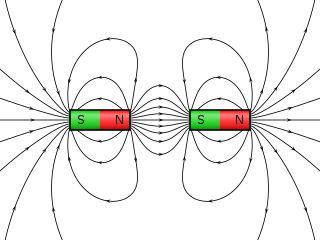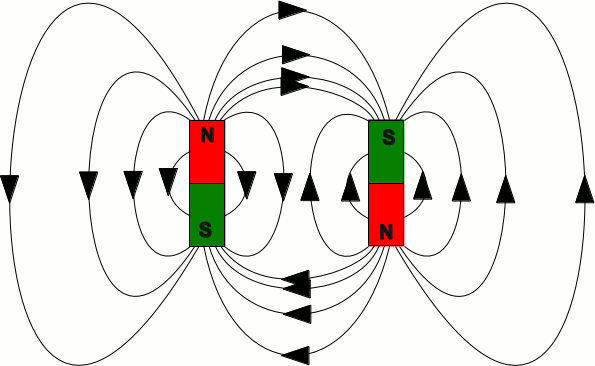A
Anew Leaf
Guest
(For the sake of brevity and my own sanity and the fact that I can only work with what I know, I am focusing on the NFP-STJ system for my examples.)
If we start with the functions at the most basic level, then we have them as points floating in space:

Taken this way, the functions are defined by isolated data points. Fi is about an internal set of values, Ne is about exploring possibilities, Si collects data and relates it to the past, and Te organizes ideas.
This is a very limited way of viewing the system, and so the idea that they must be interconnected appears:

Which brings in mind the idea that these functions are merely a spectrum, and that our abilities fall somewhere along this line... And there they sit.
However, I think a more balanced view of these things would be to consider them as a polarity system. I think we often view our four main functions in terms of what we like and dislike. We love/prefer/embrace our dominant and auxillary functions, and consider our tertiary and inferior functions as our bad/shadow self only. Viewing them in this way makes it seem as if our 3rd/4th functions are a problem that needs to be solved, or a secret that should be swept under the rug. Problems are things that have end points and can actually be solved. Whereas polarities are something that are ongoing and need to be managed.
A simplistic look at a polarity we all have is that of breathing:

It would be detrimental to our health to go too far in either upper quadrant, and so we spend most of our lives mindlessly traversing this path like an ice skater with endless energy.
I think the same concept can be applied to the cognitive function spectrums:

The purple butterfly represents the ideal path of necessary motion that must be undertaken in order to reap the full benefits of cognition and content creation. Problems arise when we want to stay forever up in the quardrant of our choice. What goes up comes down, and eventually we sink into the negative aspects of our preference. This is uncomfortable and is a sign that we need to move over to the opposite pole in order to provide relief.
A Ne dom/aux that has gone too far off into the ocean of possibilities, will have lost sight of the shore of Si. What is often the case is that the island of Si looks like a boring jut of rocks with no trees and no coconuts and should therefore be avoided as long as possible. When the tides inevitably bring the boat to the shore, the positives of such an interaction will be outweighed by the perceived negatives, and the Ne-er leaps out again into the ocean. This action causes further sinking into the negatives of Ne, rather than boosting back into the positives.
In a perfect system, they would start paddling back to the island to verify their information is true before heading out in a new direction. The return to the island would provide real data and a new focus for further exploration. It would also give a chance for rest from constant searching, and the ability to look at the ocean with fresh eyes.
My idea here is that this helps represent why we are supposed to develop and manifest the full spectrum of each function as we get older and work towards having a balanced system. I think there can be a fear that if we embrace that opposite side of ourselves, that we will lose the purity of what we think makes us great. When instead the opposite pole serves primarily to enhance the primary.
This is my short and simple overview. I can, far too easily, expand outward on any of these points if anyone wishes to discuss this with me.
If we start with the functions at the most basic level, then we have them as points floating in space:

Taken this way, the functions are defined by isolated data points. Fi is about an internal set of values, Ne is about exploring possibilities, Si collects data and relates it to the past, and Te organizes ideas.
This is a very limited way of viewing the system, and so the idea that they must be interconnected appears:

Which brings in mind the idea that these functions are merely a spectrum, and that our abilities fall somewhere along this line... And there they sit.
However, I think a more balanced view of these things would be to consider them as a polarity system. I think we often view our four main functions in terms of what we like and dislike. We love/prefer/embrace our dominant and auxillary functions, and consider our tertiary and inferior functions as our bad/shadow self only. Viewing them in this way makes it seem as if our 3rd/4th functions are a problem that needs to be solved, or a secret that should be swept under the rug. Problems are things that have end points and can actually be solved. Whereas polarities are something that are ongoing and need to be managed.
A simplistic look at a polarity we all have is that of breathing:

It would be detrimental to our health to go too far in either upper quadrant, and so we spend most of our lives mindlessly traversing this path like an ice skater with endless energy.
I think the same concept can be applied to the cognitive function spectrums:

The purple butterfly represents the ideal path of necessary motion that must be undertaken in order to reap the full benefits of cognition and content creation. Problems arise when we want to stay forever up in the quardrant of our choice. What goes up comes down, and eventually we sink into the negative aspects of our preference. This is uncomfortable and is a sign that we need to move over to the opposite pole in order to provide relief.
A Ne dom/aux that has gone too far off into the ocean of possibilities, will have lost sight of the shore of Si. What is often the case is that the island of Si looks like a boring jut of rocks with no trees and no coconuts and should therefore be avoided as long as possible. When the tides inevitably bring the boat to the shore, the positives of such an interaction will be outweighed by the perceived negatives, and the Ne-er leaps out again into the ocean. This action causes further sinking into the negatives of Ne, rather than boosting back into the positives.
In a perfect system, they would start paddling back to the island to verify their information is true before heading out in a new direction. The return to the island would provide real data and a new focus for further exploration. It would also give a chance for rest from constant searching, and the ability to look at the ocean with fresh eyes.
My idea here is that this helps represent why we are supposed to develop and manifest the full spectrum of each function as we get older and work towards having a balanced system. I think there can be a fear that if we embrace that opposite side of ourselves, that we will lose the purity of what we think makes us great. When instead the opposite pole serves primarily to enhance the primary.
This is my short and simple overview. I can, far too easily, expand outward on any of these points if anyone wishes to discuss this with me.



